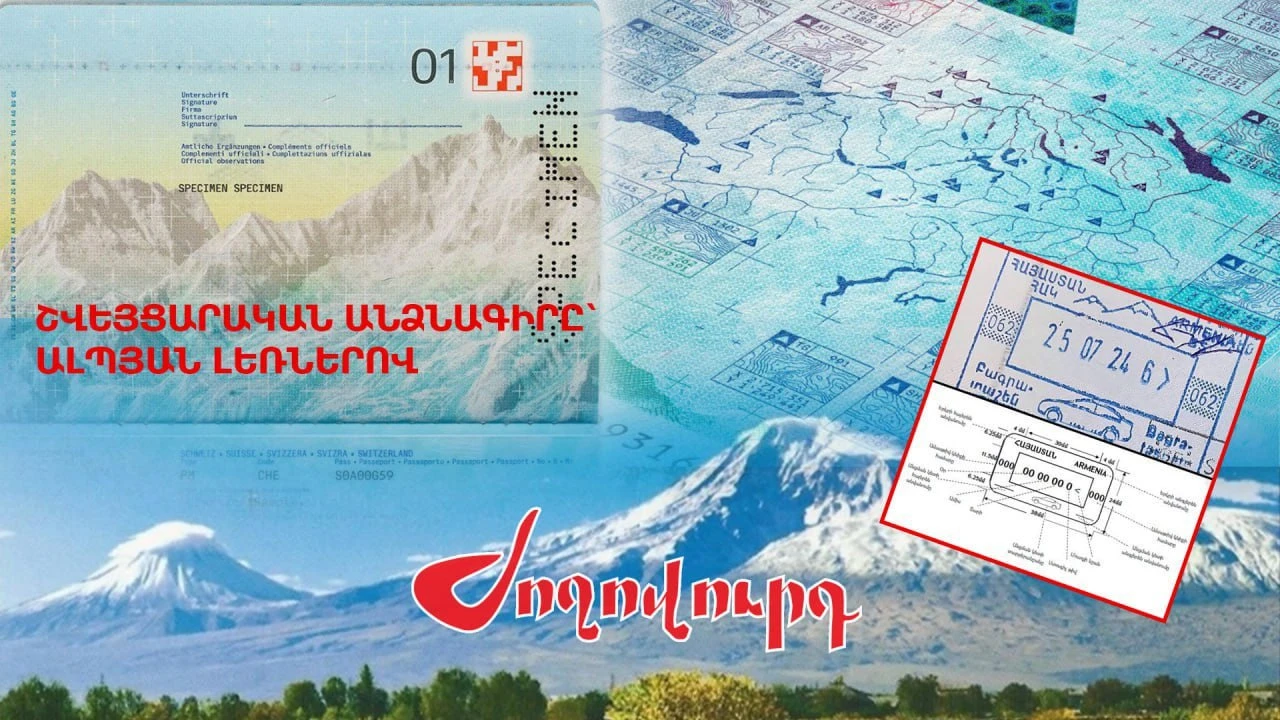Zhoghovurd daily writes:
"There are many examples in the world when states use symbols in their state coatings, flags or official documents, which relate to their historical or cultural territories, which are not currently in the sovereign territory of that state. These symbols are adopted as an expression of historical heritage or national identity, not as a territorial claim.
Here are some such number of countries that prove that the use of symbols on areas outside their current borders does not imply territorial claims to other states. The examples once again states that using Mount Ararat in Armenia's arms or passport stamps does not mean a territorial demand for Turkey.
1. Switzerland uses images of Alps Landscapes, but the Alps are not fully in the Swiss mountains, Italy, Austria, France, Germany, Slovenia, but the use of these images is not considered a territorial claim to the above-mentioned countries. Neither the government nor official sources did not make or hint that these images represent territorial ambitions to other countries, even if those mountains are located in Italy, France, etc.
The images are presented as symbols of nature, history and culture.
2. Ireland has its symbols that present the territories in the country's historical period, although some of them are in Northern Ireland, which is under the Great Britain. For example, the Red hand of the Ulster region is used in the Irish state symbols, but this does not mean that Ireland is represented by territorial claims towards Great Britain. The symbol presents a historical and cultural heritage. The Irish Constitution does not contain territorial claims on Northern Ireland. Although he notes the desire of unification in the future, the use of symbols as part of national identity is not considered a legal or political requirement.
3. The Byzantine biceps eagle is used in the state symbols of Greece. The biceps taken from the Byzantine Empire can be seen in Greek Orthodox Church coatists, in military signs, and even in some urban arms. It is historically symbolizing the Byzantine capital Constantinopolis (now Istanbul) and the authority of the empire against Anatolia and the Balkans. Modern Greek policy does not have an official territorial ambition against Istanbul or Eastern Thracia. The use of Byzantine symbols is of cultural and historical significance, not political. 4. The emblem of the Estonia depicts lions of Danish descent. The state coat of arms of Estonia depicts three blue lions (or leopards) that are inheritance from King Valdemar II of Denmark, 1219. He conquered the north of Estonia.
This symbol was revived in the 1990s after independence. The symbol does not contain any territorial claim on Denmark. This is perceived as a historic heritage. 5. The symbols of Castilia, Leon, Aragon, Navarry, Granada and Bourbons are presented in the state coat of arms of Spain. These historical Kingdoms also included territories outside Spain (for example, Sicily, Naples). These symbols are not interpreted as a territorial claim to other countries. They are also presented as historic units. 6. A number of autonomous regions of Spain, such as Catalonia or the Basque Country, use historical flags or coatists that do not coincide with the current administrative structure.
These symbols are accepted as part of cultural identity and are not interpreted as independence or territorial claim. After all, we can say that the coat of arms of Armenia, in the seals of the checkpoints, Mount Ararat, has historical, cultural and religious importance for the Armenian people. This image is used as a symbol of national identity, not a territorial claim to Turkey.
Just like the mountains in the Swiss passport, which are not in Switzerland, but this fact is not considered a territorial claim, in the same way Armenia can use Ararat as a cultural and historical symbol, regardless of its current geographical location. "


























